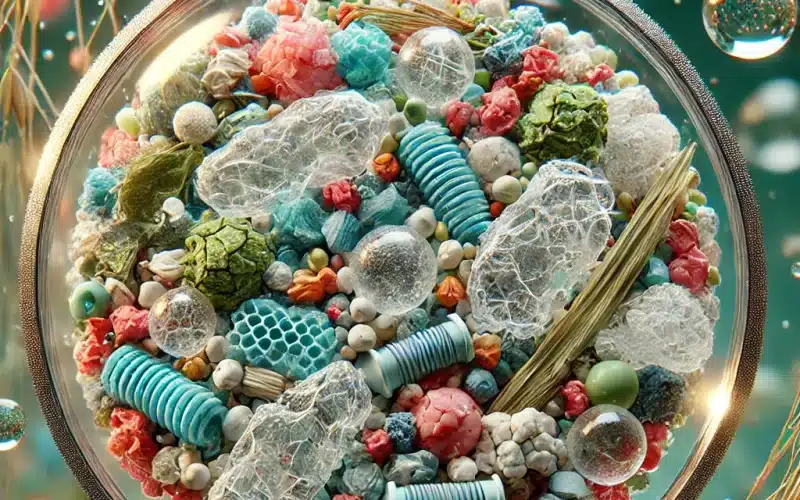
Biodegradable microplastics (BMPs) are a subset of microplastics that are designed to break down more quickly than conventional plastics through the action of microorganisms, enzymes, or other natural processes.
These materials are typically derived from natural sources such as plant starch, polylactic acid (PLA), and polyhydroxyalkanoates (PHA), or from modified synthetic materials designed to be more degradable under specific environmental conditions.
But is it really a sustainable product? While biodegradable plastics might seem like an environmentally friendly alternative, their degradation into microplastics poses important risks to soil and plant health, potentially even making them more harmful than traditional plastics so a new article in the New Scientist says.
Biodegradable plastics that get broken down into microplastics may actually be worse for soil and plants than conventional ones. https://t.co/nAhH9GKvmb
— New Scientist (@newscientist) July 26, 2024
But let’s first look where these BMPs are used.
Uses of Biodegradable Microplastics:
- Agriculture: BMPs are used in agricultural films and mulches to improve soil health and crop yields by controlling weeds, retaining soil moisture, and reducing erosion. Their biodegradable nature aims to eliminate the need for removal and disposal, reducing plastic waste in the environment.
- Packaging: They are used in packaging materials, including bags, containers, and wrapping films. This application is particularly relevant for single-use products, where biodegradability can help mitigate the environmental impact of plastic waste.
- Medical and Pharmaceutical Applications: BMPs are utilized in medical devices, drug delivery systems, and surgical sutures. Their ability to degrade naturally within the body makes them suitable for temporary implants and controlled drug release systems.
- Consumer Goods: Biodegradable microplastics are found in various consumer products such as disposable cutlery, plates, cups, and other items intended for short-term use. These products aim to reduce the environmental footprint compared to their conventional plastic counterparts.
Higher Concentration of Particles in Soil
Despite being widely used, researches have shown that Biodegradable microplastics (BMPs) can pose environmental concerns, potentially harming soil and plants more than conventional plastics. While biodegradable plastics are designed to break down more quickly, they often degrade into microplastics faster under certain conditions, leading to a higher concentration of these particles in the soil.
BMPs can disrupt the soil structure, affecting its ability to retain water and nutrients, which are essential for plant growth. The breakdown process of BMPs also releases various additives and chemicals used in the production of these plastics, which can be toxic to plants and soil microorganisms.
Moreover, BMPs can act as vectors for chemical pollutants and microorganisms. Due to their smaller size and increased surface area, BMPs can adsorb and transport more pollutants than conventional microplastics. This can lead to a higher accumulation of toxic substances in the soil, further impacting plant health and soil ecosystems.
After analyzing #neonicotinoid #pesticide & #microplastic interactions—contaminants of concern in agriculture—a research team finds #neonics such as #thiacloprid become more #bioavailable in #soils containing traditional & biodegradable #plastics. Blog: https://t.co/Hajex5xX77
— Beyond Pesticides (@ByondPesticides) July 23, 2024
Further Research Needed
Developing new biodegradable plastics that break down more completely and rapidly under natural environmental conditions is a key focus. Research is ongoing to create materials that degrade into harmless byproducts, reducing the risk of persistent microplastic pollution.
An example are Cassava bags which can biodegrade in natural environments such as soil and water within months, depending on environmental conditions. They do not leave harmful residues or microplastics behind compared to traditional biodegradable plastics which take longer to degrade and may still produce microplastics during the degradation process if not properly managed.
This is NOT a plastic bag!
— Franco Ronconi 🇮🇹 (@FrRonconi) April 4, 2024
Cassava Bags are 100% natural, biodegradable and compostable bags ♻️
There are no microplastics or toxins, and there is no plastic footprint left behind
It takes 3-6 months to biodegrade in soil, a few days to disolve in the ocean, 3 minutes to… pic.twitter.com/IsXeG3sOAR
In addition, there is a need for enhanced monitoring of soil and water quality to detect and assess the presence and effects of microplastics, including BMPs.
